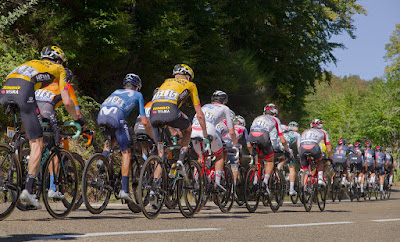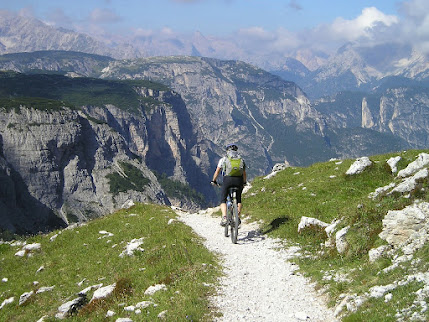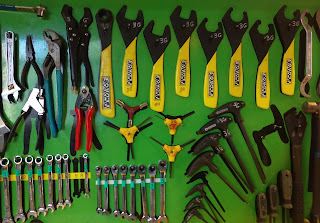A Brief knowledge on Tour De France
A Brief knowledge on Tour De France
Introduction to Tour De France
The Tour de France is an annual multiple stage bicycle race primarily
held in France, with occasional passes through nearby countries. Held over 3
weeks spanning July, it is a gruelling test of human endurance
covering approximately 3500 km's stretch over 21 stages, over multiple
styles of terrain .To put that into perspective, that’s roughly the distance
from London to Tel Aviv, New York to Las Vegas Or Melbourne in Australia to
Perth.
How Tour De France started ?
The races history dates back to 1903 when Géo Lefèvre, a 26 year
old cycling journalist for the delay sports newspaper L’Auto suggested the idea
for a bicycle race to his editor Henri Desgrange, in order to promote the
paper, and boost circulation. Henri liked the idea, and the inaugural race was
held over 19 days, from July the 1st to the 19th the race attracted 60
competitors, who each shared in the prize money of 20,000 Francs. 6,075 of
which went the inaugural tour winner, Maurice Garin. Garin arrived in Paris
nearly 3 hours of runner up Lucien Pothier. And almost 65 hours ahead of the
21st and last to finish competitor. With only 21 out of 60 riders
finishing the inaugural race. The gruelling nature of the Tour was established
early. In some ways the race was more gruelling than the modern day version.
Competitors pedalled the dirt roads of France through the day and night, on
fixed gear bikes. Evading human blockades. Route jamming cars and nails placed
on the roads by fans of other riders. The first Tour was open to whoever wanted
to compete. Most riders were in teams organised according bicycle brand names
that looked after them. The private entrants were called the 'Touriste
Routiers' - Tourists of the Road. They were allowed to take part providing that
they make no demands on the organisers. There was no place for individuals in
the post 1930’s Tours, and the original Touriste Routiers, mostly disappeared
although some were absorbed into regional cycling teams created by Henri
Desgrange. Night riding was also dropped after the 2nd tour in 1904, when there
had been persistent cheating, when judges couldn’t see riders. That reduced the
daily overall distance, but the emphasis remained on endurance. Desgrange said
his ideal race would be so hard, that only one rider would make it to Paris.
The demanding nature of the race caught the public’s imagination and the race
has been held annually since its first edition in 1903 except when it was
stopped for the 2 World Wars. As the tour gained prominence and popularity the
race was lengthened and its reach began to extend around the globe, as riders
began to participate in the race each year. Today the Tour is a UCI World Tour
Event which means that the teams that compete in the race are mostly UCI pro
teams.
Modern Tour de France and categories
The modern editions of the Tour de France consist of 21, day long
segments or stages held over a 23 day period While the route of the modern Tour
de France changes each year. The format of the race stays the same with the
eventual winner be the cyclist with the lowest cumulative time across 3
different types of stage categories.
These include:
Time Trials: Where the cyclist competes individually against the
clock using an aerodynamic bike and gear.
Flat Stages: Usually high speed sections across the French countryside.
Mountain Stages: Which take in the Pyrenees and the Alps and make up the
hardest part of the Tour.
All of the stages are timed to the finish. With the riders finishing
times compounded with their previous stage times. The rider with the lowest
aggregate time is the Leader of the race and gets to wear the coveted Yellow
Jersey. Although the holder of the Yellow Jersey, can change throughout the
race depending on who is leading at the end of each stage. The ultimate winner
is the rider who is awarded the Yellow Jersey at the conclusion of the final
stage of the race which has ended every year since 1975 of the flats of the
Champs-Élysées in Paris.
Why a Yellow Jersey?
Well, the original L’Auto was published on distinctive yellow newsprint
and so was a way to promote the paper in the early days of the races history.
But the Yellow Jersey, also known as “Maillot Jaune” is not the only jersey in
the race. Although it garners the most attention as it is awarded to the winner
off the overall classification. There are other classifications, or contest
within the Tour. Most with their own distinctive jerseys.
Some other jerseys
The Green Jersey or “Maillot Vert” represents the races best sprinter.
The Polka Dot jersey designates the races finest climber. The White Jersey
designates the highest ranked in the overall competition aged 25 or younger.
Aside from these distinctive jerseys riders on each of the 21, 9 man teams are
required to wear the same coloured jersey. Each team’s jersey features logos of
sponsors who pay the riders salaries. A few riders wear special jerseys. For
instance, the reigning World Champion wears his team colours but on a social
jersey with horizontal coloured stripes. National current road champions wear
team jerseys featuring their countries colours. Together all these riders with
their different Jersey form a kaleidoscope of moving colour on wheels called
the "Peloton". But the Peloton isn’t just there for good looks and
serves a very important purpose of conserving a riders energy. This is because
the peloton reduces drag by shifting shape to exploit tail winds, fight head
winds and cope with cross winds and wind shear. A strategy known as drafting.
Riding in the middle of a well-developed group or Peloton, a cyclist can save
up to 40 percent of his energy expenditure. But one cannot win the tour de
France or get to wear one of the coveted coloured jerseys by simply riding
along in the peloton. At some point riders must break away from the pack if
they hope to improve their overall standings in the race. When a group breaks
away the drafting strategy changes resulting in what is known as a double paced
line. This is where team strategy can come into play. For example if the
breakaway consist of riders largely from the same team or riders who are no
threat to each other in the classification then they can work together
effectively to distance themselves from the peloton and rival competitors. If
however the breakaway consists of a rider from a rival team or a threat in the
overall standings then riders may work to slow them down or hinder them. In
fact whilst The Tour de France is an individual event in the sense that every
man pushes his own pedals to get around the course. A rider's individual
triumph, at least to some degree, is the result of selfless teammates. It's
rare for a cyclist to win a stage without acknowledging teammates who've put
him in a position to ride to a triumph. Team members who are not in the frame
for major awards are known as “domestiques”. This may mean fetching and
carrying water and supplies from the team car. Or providing a small slipstream
by spending a lot of time at the front of the peloton. Or it could even mean
turning around and cycling back down a mountain to fetch a stricken colleague
and pace him back into contention.
Cracking
A contender stripped of all of his teammates in a breakaway or a
mountain climb is very vulnerable. And can result in what is known as cracking.
Cracking is what happens when a rider becomes completely exhausted and simply
has no strength to carry on. When a rider cracks they can dramatically fall
away from the field losing valuable time and in some cases drop completely out
of the race all together. Many Tour de France leaders have dramatically lost
the tour as result of cracking mainly on the mountain stages. In fact often the
most exciting moments in the race is when two riders battling for the overall
lead in the tour will battle each other up the mountain stages, mentally and
physically testing each other resolve and trying to force the other to crack.
It goes without saying therefore that you have to be supremely fit to compete
in the Tour de France.
Dangers and its effects on body
Many experts rate it the toughest of all major sporting events and participants burn up to 7,000 calories per stage. Bear in mind that an average person in a day will burn 2000. Heart rates can also reach dangerous limits on climbing stages reaching upwards of 200 beats per minute. Tour de France winner, Miguel Indurain’s heart was believed to be 50% bigger than average and had a resting heart rate of 28. An average person has 60 to 90. At the end of race stages, which can last for four-to-six hours, cyclists are required to overcome severe mental and physical fatigue in order to maintain speeds of more than 60km/hr for the last 5 to 10 km's of racing. Accelerating to speeds of 75 to 80km/hr at the finish line.
But aside from being a supreme athlete and having to overcome the
physical and mental challenges of the race. As well as having a good team
behind you. You need to also have a bit of luck, and nerves of steel as there
are many hazards that can reduce any rider’s dream of winning the Tour into a
nightmare. For example aside from the other riders in the race with which to
contend, this can often result in massive pile-ups. There are as almost as many
vehicles that form a long procession of support staff, race organizers and
media. Not to mention the mountain descents where riders can reach nearly
80km/h where the slightest slip up or mistake can result in a dangerous fall.
Then there are millions of spectators who line the roads of the Tour De France.
Finally there’s the weather. Rain, hail and even snow in the mountains can mean
for a bad day resulting in falls or even catching a common cold, which can kill
of your chances. Whilst on the flats blistering heat and sun can result in
chronic dehydration and fatigue. So you can see there’s a lot to the Tour De
France. But all of it makes it one of the most amazing and memorable sporting
events.




Comments
Post a Comment